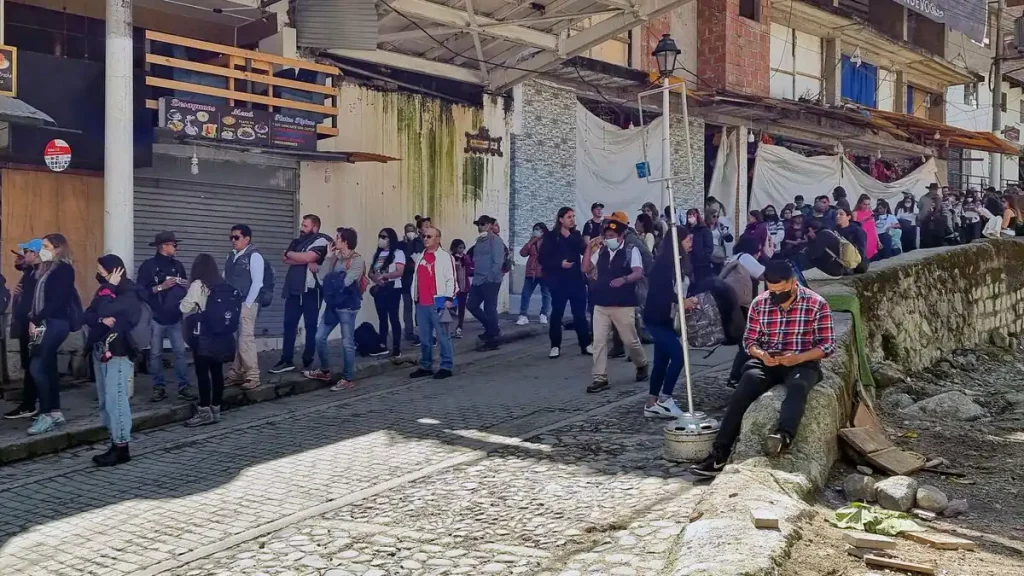
Machu Picchu in southeastern Peru suspended the sale of tickets to access the Inca citadel on Friday, angering traders and sparking protests from tourists, an AFP journalist on the scene said.
• Also Read: Even more visitors are allowed to Machu Picchu
Protests took place around the Citadel as well as in the village of Machu Picchu, also known by its old name of Aguas Calientes.
“I paid for my (train) tickets with Inca Rail for a day with the tour guide, we also paid extra for the bus to take us to the ruins of Machu Picchu and they wouldn’t let me. We don’t have a ticket so we’re done,” Mexican tourist Israel Gonzales Riju told AFP.
“It’s a scam,” said the angry tourist, who said he paid $65 for the train from Ollantaytambo, 148 kilometers away.
Traders in the city also expressed their displeasure.
Dozens of them blocked the railway line to block train traffic, demanding that the Ministry of Culture resume the sale of Machu Picchu tickets to revive the local economy.
Officials did not provide any explanation for the suspension, which was decided on Friday, but entry tickets to Machu Picchu are subject to quotas.
Faced with the demonstrations, the Ministry of Culture has indicated that it has decided to finally resume the sale of tickets while respecting the limit set to protect the archaeological heritage.
This is the second show in just two weeks that there are no tickets to visit this tourist spot.
Before the first performances, about 4000 people could enter the fort every day.
The ministry agreed in late July to increase this capacity to 5,000 people per day.
This ancient city is located 110 km from Cusco, the ancient capital of the Inca Empire, and was built in the 15th century by Emperor Pachacutec.
Machu Picchu has been a UNESCO World Heritage Site since 1983.





More Stories
Allegations of corruption Qatar warns of ‘negative impact’ of European measures
USA: Famous “Hollywood cat” euthanized in Los Angeles
The campaigner who called for the shooting of Ukrainian children has not been charged